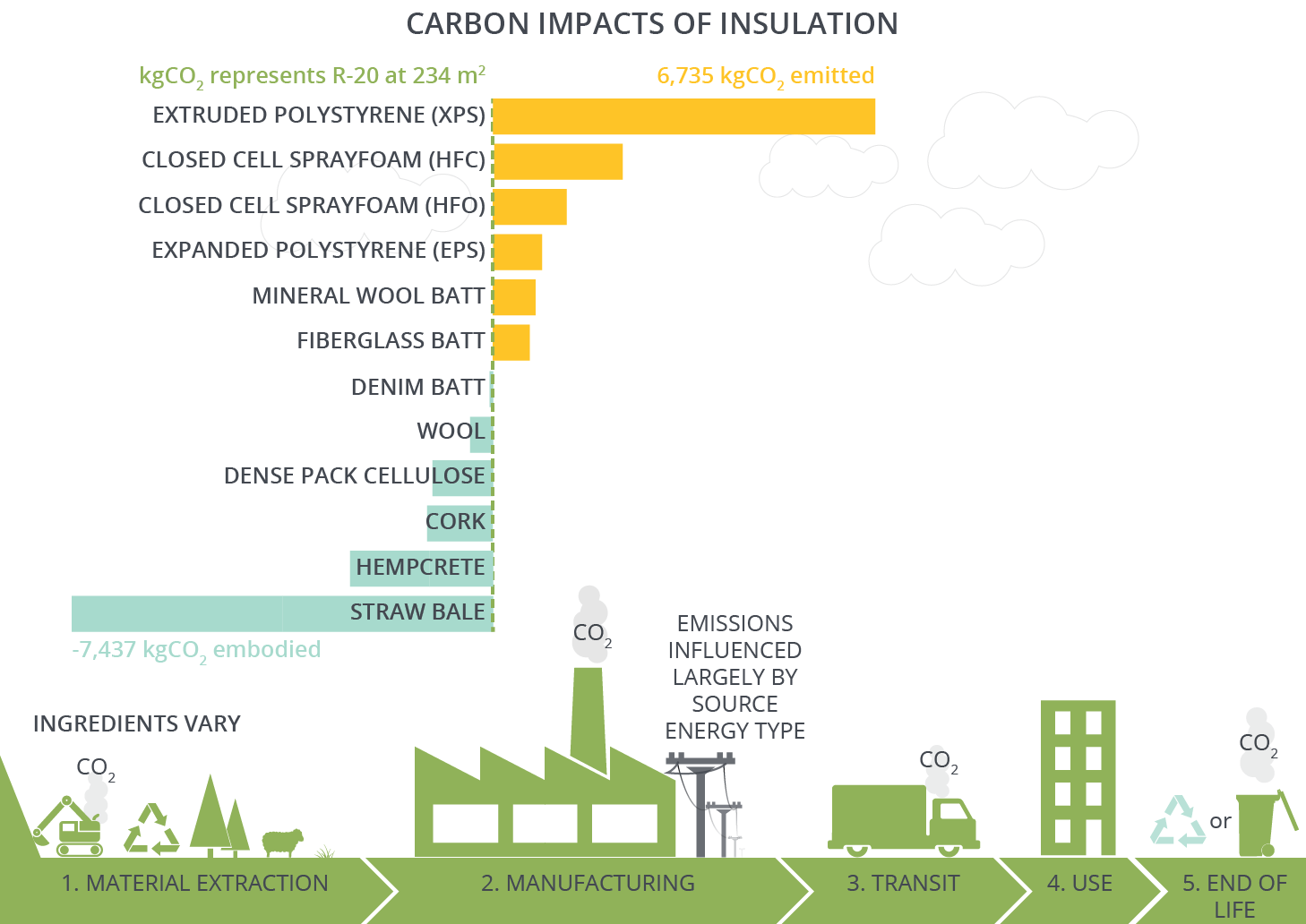An Overview:
Buildings are currently responsible for 39% of global energy-related carbon emissions, i.e., 28% from operational emissions, and the remaining 11% from materials and construction. In 2050, as the world’s population is set to approach 10 billion, the global building stock is expected to double in size.
The carbon emissions released before the built asset is referred to as ‘upfront carbon’ and is responsible for half of the entire carbon footprint of new construction between now and 2050. Therefore, the built environment sector has a vital role to play in responding to the climate emergency and addresses upfront carbon.
What is Embodied Carbon?
In a life cycle of a building, the embodied carbon is the carbon dioxide equivalent of greenhouse gas emissions associated with the non-operational phase. These emissions are also caused by extraction, manufacture, transportation, maintenance, deconstruction, disposal, and end of life aspects of the materials and systems for a building.
Understanding the relationships between ’embodied’ carbon and ‘operational’ carbon assist in determining the overall optimum carbon reductions as we build increasingly energy-efficient buildings that use less energy to run and rely increasingly on locally-generated low or zero-carbon heat and power sources.
Embodied carbon is the carbon footprint of material, and it considers how many greenhouse gases (GHGs) are released throughout the supply chain and is often measured from cradle to (factory) gate, or cradle to site (of use) and includes energy consumption in the manufacturing process and for the logistics.
How to Reduce ‘Embodied Carbon’ in the construction process?
Embodied carbon is an urgent issue as the emissions released in the next 20 -30 years are critical to keeping global temperatures at tolerable levels. For the building industry, reducing carbon emissions has typically meant increasing energy-efficient and pushing for renewable energy production, and hence reducing of carbon generated by fossil fuels used to operate buildings. Below are some steps that need to be followed:
- Tackling embodied carbon: Materials or systems that contribute to a building’s embodied greenhouse gas emissions. The only way to get a clear picture of how one material or system compares to another in the context of a building project and looks at multiple impacts of building materials, including global warming potential- from extraction and manufacturing through the landfill or recycling plant.
- Optimizing Structural Systems: Every project doesn’t have a budget of a full-scale whole-building life-cycle assessment. One of the major point is that the structural systems always compromise the largest source of embodied carbon in the building. So, the first goal is to reduce the embodied carbon of a project by targeting the structural system- Concrete, steel, and wood can all be optimized in different ways to reduce impacts.
- Concrete and Cement: If things don’t change with how we treat embodied carbon, impacts will total be 90% of the carbon released from newly constructed buildings between 2015 to 2050. Concrete has a larger footprint because of its carbon-emitting process used to make- the portland cement. Reducing the cement content can take many forms, by just specifying higher-quality aggregate or by reducing the water content.
- Steel: By weight, steel has a higher embodied carbon footprint than concrete- representing one ton of steel for a ton of greenhouse gas emissions. As concrete buildings use a lot steel for reinforcement, i.e. 90%-100% recycled steel. Structural systems bear a bulk of embodied carbon footprint of buildings, representing up to 15% of the global warming impact of a typical commercial building.
New construction or Reuse?
The commercial sector tends to favor new and cutting-edge architecture, but the better option from a carbon reduction perspective- is Reuse and Restoration. As of now, the majority of building’s embodied carbon is accounted for by the foundation, structure, and envelope, and it typically makes sense to reuse these parts of a building rather than to demolish and rebuild. As the carbon payback of new construction and retrofits vary depending on building types, location, climate, and grid mix, it saves 50-75 percent of embodied carbon.
New buildings that are designed to be more efficient and are attractive assets, however, the energy, water, and related carbon savings achieved once a building is occupied take a longer time to overcome the embodied carbon that was emitted during construction.
- By 2030, all new buildings, infrastructure and renovations will have at least 40% less embodied carbon with significant upfront carbon reduction, and all new buildings are net-zero operational carbon.
- By 2050, new buildings, infrastructure, and renovations will have net zero operational carbon.
Necessary Mitigation steps that can help you cut the embodied carbon on your end:
- Ensure that you build for a long time that supports a permanent building.
- Avoid building on swamps as the building will require more soli stabilization and deep foundations.
- Do consider structural options, opt for a lighter frame or timber frame.
- Choose lower carbon solutions and choose the right suppliers.
- Optimize your building shape and size by achieving mass reduction with a compact shape.
- Design thinner floors and reduce on both slave and envelope material use.
- Try avoiding separate parking structures.
- Avoid using elements with limited value, for example, flooring, ceiling or facades.
- Choose for long-live solutions for windows, roofing, walls, floors and foundations.
Reducing embedded carbon in steel, cement, aluminum, and other metals is one of the challenging aspects of climate change mitigation. Solutions to the problem have been scarce and not highly viable from technological standpoints. It is unclear what amount of acceleration can be expected from policies, corporate investments, and demand-side forces.





